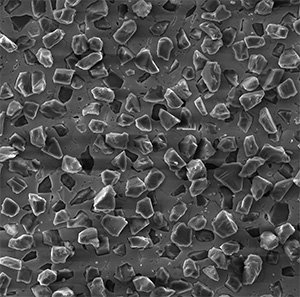In high-performance mechanical assemblies, the reliability of bolted joints is critical. Whether you’re dealing with a robotic arm, a wind turbine, or aerospace components, one persistent challenge is the risk of slippage between metal contact surfaces. When two metal parts are bolted together under load, relative motion—or micro-slip—can lead to joint failure, wear, or the need for large fasteners. That’s where metal friction shims come into play.
Friction shims are precision-engineered inserts placed between two metal surfaces to drastically increase surface friction. These shims are often used to prevent movement in high-torque applications and can even allow engineers to eliminate the need for oversized fasteners, leading to weight and cost savings.
What Makes a Friction Shim Different?
While standard shims act primarily like spacers, a friction shim is uniquely engineered. The key lies in the surface treatment. Manufacturers convert a simple metal shim into a custom metal shim with enhanced grip by applying a nano-composite layer of diamond particles using an electroless coating process. This process uniformly deposits microscopic diamond particles onto the shim surface without the need for electric current, making it highly effective for coating parts with complex shapes.
The result is a dramatic increase in the coefficient of friction—from values as low as 0.15 on untreated steel-to-steel surfaces to values as high as 0.6 with the diamond coating. This means that even under extreme loads or vibration, the bolted joint stays secure, reducing the risk of fretting, loosening, or failure.
Common Applications for Friction Shims
Here are seven real-world examples where friction shims play a critical role:
- Robotic Assemblies: In automated manufacturing, precision and repeatability are vital. Friction shims prevent component slippage in robotic joints and mounting interfaces, ensuring consistent performance.
- Wind Turbines: Turbine blade hubs and nacelle assemblies experience high torque and variable loads. Friction shims increase joint stability, preventing fatigue and extending service life.
- Rotary Actuators for Satellites: Spaceborne systems cannot afford mechanical failures. Friction shims provide ultra-reliable grip in rotating joints, minimizing weight while maximizing durability in zero-gravity conditions.
- Electric Vehicle Drive Units: As EVs push performance boundaries, drivetrain components must handle high torque loads without loosening. Friction shims help maintain joint integrity without oversizing bolts.
- Construction Machinery: In heavy equipment, joints in booms and arms are exposed to dynamic loads. Friction shims help absorb forces and prevent misalignment.
- Aerospace Turbines: Friction shims maintain clamping force and reduce fastener count in gas turbine engines, where weight and heat are significant constraints.
- Medical Imaging Equipment: Precision is paramount in machines like MRIs and CT scanners. Friction shims ensure static alignment over repeated use cycles.
What is a Torque Converter Shim?
A torque converter shim is a type of friction shim specifically designed to increase friction between components in torque converters, such as in automatic transmissions. These shims are used to reduce slippage and improve torque transfer between the impeller, turbine, and stator.
Three examples of where torque converter shims are used include:
- In high-performance racing transmissions to ensure optimal power transfer.
- In industrial hydraulic drives for consistent torque delivery under variable loads.
- In hybrid-electric vehicles to improve efficiency in regenerative braking systems.
What is an Electric Motor Shim?
An electric motor shim is used to align motor components precisely and to reduce vibration between mounting surfaces. When coated as a friction shim, it also prevents unwanted rotation or slippage, especially in high-torque or vertically mounted applications. These coated metal shims are vital for electric motor assemblies in robotics, HVAC systems, and automated manufacturing equipment.
Five Benefits of Using Friction Shims
- Increased Joint Reliability: Prevents slippage, even under dynamic loads.
- Smaller Fasteners: Higher friction allows the use of smaller, lighter fasteners without sacrificing safety.
- Vibration Resistance: Diminishes wear and loosening caused by constant vibration.
- Improved Load Distribution: Reduces the risk of localized stress and fatigue.
- Custom Fit: Can be manufactured to meet exact dimensional and friction requirements, making each custom metal shim highly application-specific.
Why Choose STI’s Friction Shims?
Engineers looking for high-performance solutions are finding that metal friction shims with Composite Diamond Coatings (CDC) are often superior to 3M friction shims, offering higher grip, more consistent coating thickness, and greater material compatibility. At Surface Technology Inc. (STI), friction shims are available in a variety of base metals—steel, stainless steel, or aluminum—and in multiple CDC formulations, depending on the level of grip required.
Whether you’re designing for the next generation of aerospace, automotive, or industrial equipment, custom metal shims with CDC can make all the difference in performance and reliability.
Friction Shims from Surface Technology (STI) are available in steel, stainless steel, or aluminum shim base metals with any version of STI’s Composite Diamond Coatings (CDC), depending on the level of grip required. Let us help you engineer a better, safer connection.







